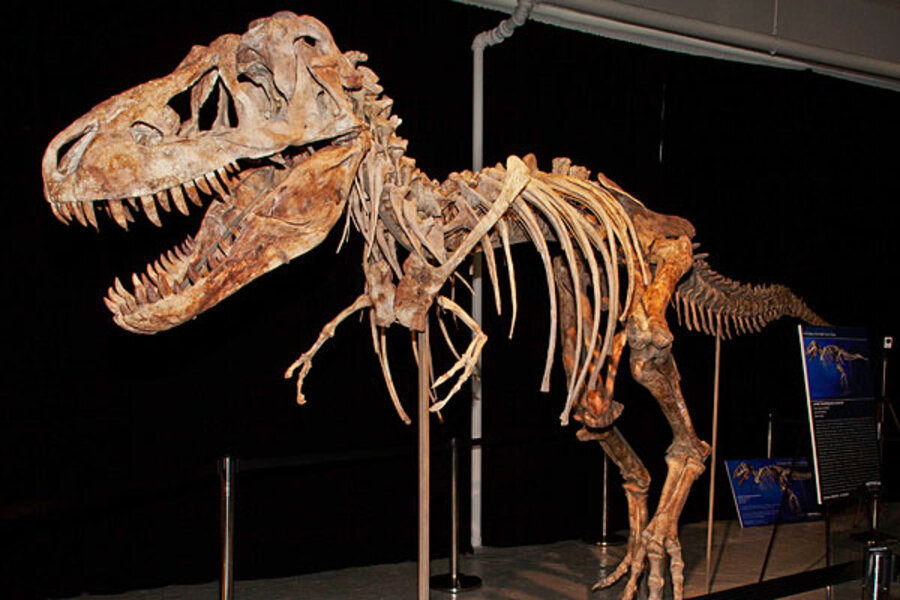Did someone smuggle a Tyrannosaur skeleton out of Mongolia?
Loading...
| New York
U.S. authorities filed a lawsuit seeking to return to Mongolia a 70-million-year-old piece of its cultural heritage - fangs and all.
The skeleton of a Tyrannosaurus bataar - a smaller Asian cousin of the Tyrannosaurus rex - has been the subject of a months-long legal battle and is now being sought by Manhattan U.S. Attorney Preet Bharara, who announced the federal government's lawsuit on Monday.
Bharara seeks the forfeiture of the skeleton from Heritage Auctions of Texas, the auction company that sold it for more than $1 million last month to an undisclosed buyer, Bharara said in a statement. He vowed to return the skeleton to Mongolia, where it was originally "looted from the Gobi Desert."
"A piece of the country's natural history was stolen with it, and we look forward to returning it to its rightful place," Bharara said.
Mongolia's President Tsakhia Elbegdorj thanked U.S. authorities for stepping into the dispute, saying in a statement "an important piece of the cultural heritage of the Mongolian people" had been recovered.
The first T. bataar skeleton was discovered in 1946 during a joint Soviet-Mongolian expedition to the Gobi Desert in the Omnogovi Province, Bharara said. Since 1924, Mongolia has enacted laws declaring dinosaur fossils to be the property of the government, criminalizing their export.
Last month, Dallas-based Heritage Auctions agreed to help the Mongolian government investigate the ownership of the skeleton, which was auctioned in New York in May. A state district judge in Dallas granted the Mongolian government a temporary restraining order to prevent the transfer of ownership until it was determined whether it was illegally obtained from Mongolia.
On June 5, at the request of Mongolia's president, several paleontologists specializing in the species examined the skeleton and concluded it was a Tyrannosaurus bataar unearthed from the western Gobi Desert in Mongolia between 1995 and 2005.
(Reporting by Joseph O'Leary; Editing by Barbara Goldberg and Christopher Wilson)







